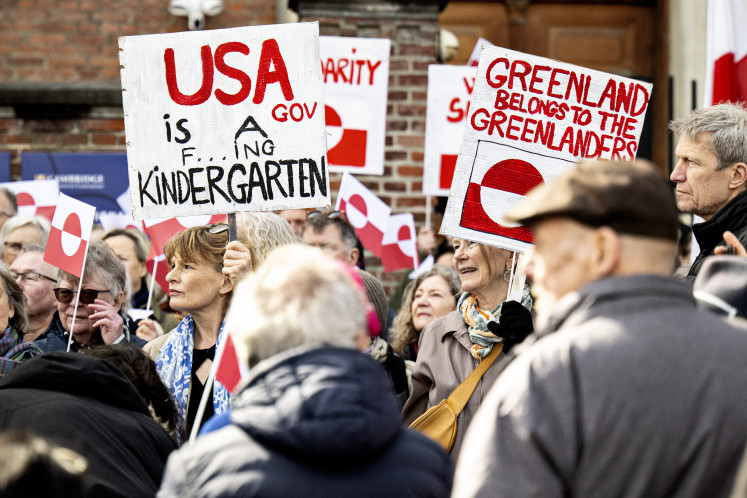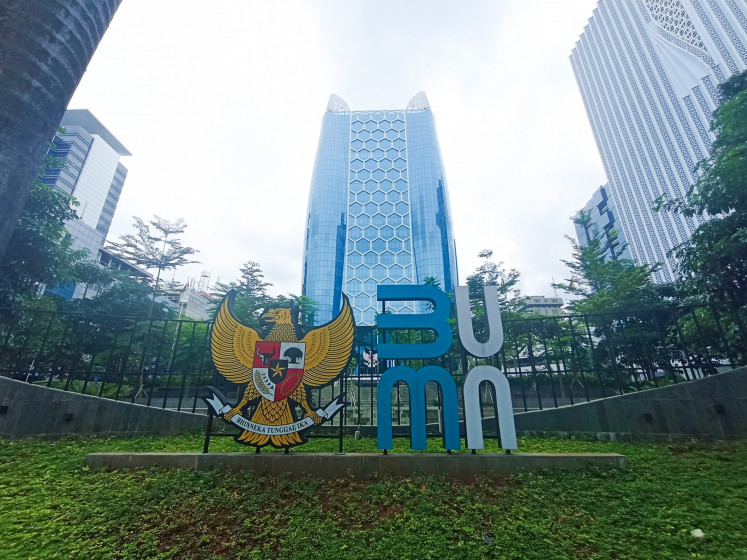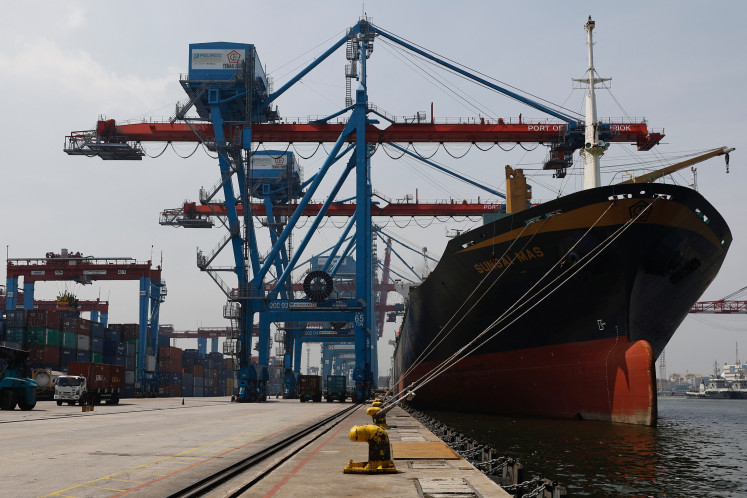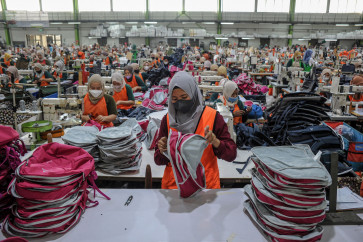Deindustrialization has really occurred in Indonesia
Indonesia needs to adopt a more open-minded approach to address the issue of premature deindustrialization and foster reindustrialization.
Change text size
Gift Premium Articles
to Anyone
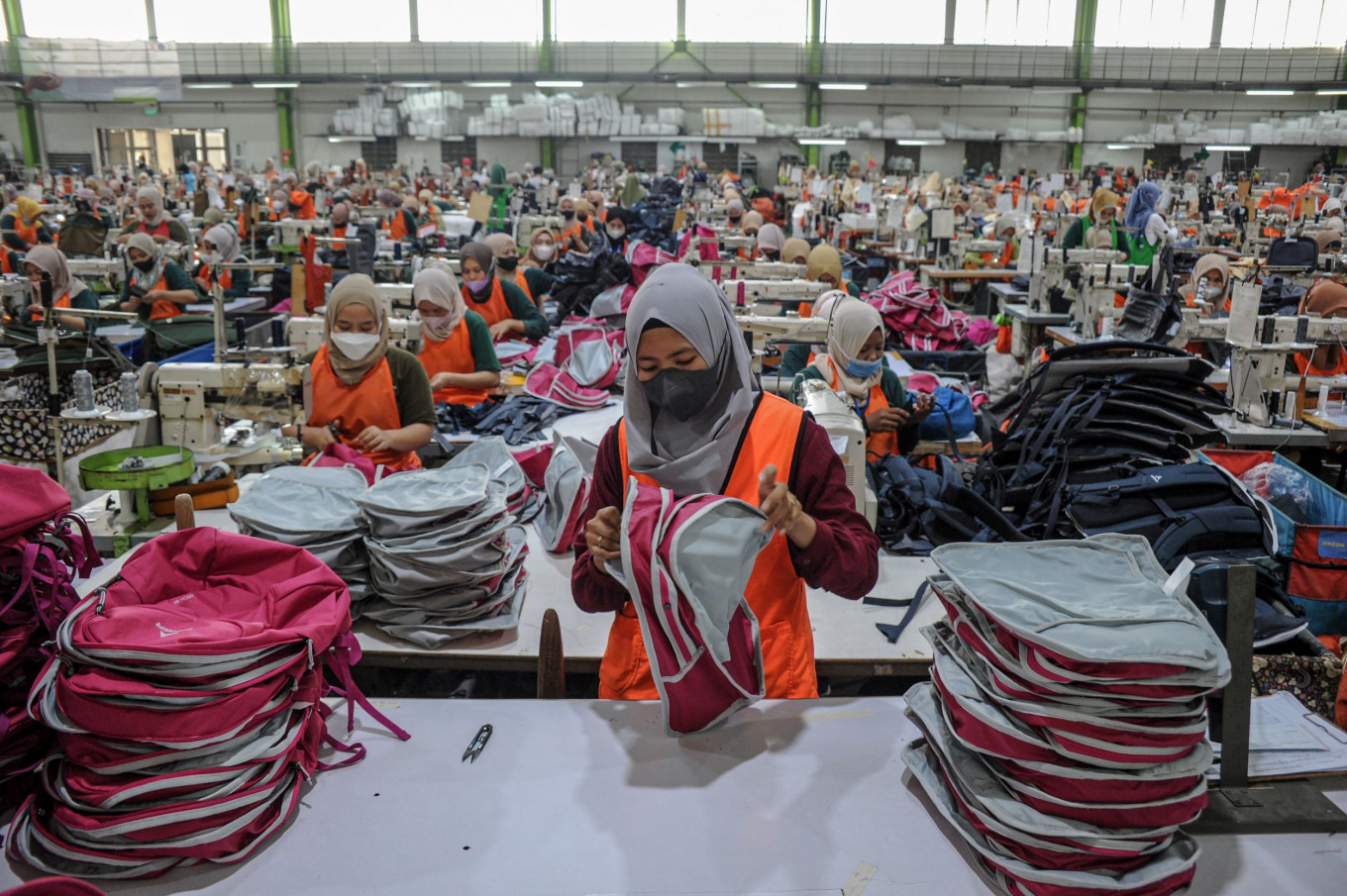 Labor intensive: Workers produce backpacks at a factory owned by PT Eksonindo Multi Product Industry in Katapang, Bandung regency, West Java, on June 14, 2023. The company produces up to 6,000 backpacks on a daily basis for local brands Eiger, Bodypack and Exsport. (Antara/Raisan Al Farisi)
Labor intensive: Workers produce backpacks at a factory owned by PT Eksonindo Multi Product Industry in Katapang, Bandung regency, West Java, on June 14, 2023. The company produces up to 6,000 backpacks on a daily basis for local brands Eiger, Bodypack and Exsport. (Antara/Raisan Al Farisi)
A recent opinion piece titled "Deindustrialization in Indonesia: An opposite viewpoint" by Affan Alamudi, published in The Jakarta Post on June 28, 2023, challenges the prevailing understanding. The article deviates from the realities on the ground and presents the complete opposite of the facts. From the very beginning, the author asserts that the observation of Indonesia is experiencing deindustrialization is groundless, a claim that lacks substantiation and appears more akin to a fairy tale than a well-founded argument.
As readers, we were initially intrigued by the title, expecting a thought-provoking perspective from an advisor to a leading institution focused on reindustrializing Indonesia. We hoped the article might provide breakthrough insight.
However, the article ultimately failed to present any substantive counterarguments to support its assertion that deindustrialization in Indonesia is groundless. Instead, the author briefly mentioned that the government has implemented policies to foster industrial growth, which, in itself, does not effectively challenge the fact of deindustrialization.
Moreover, the author's perspective conveniently overlooks the broader tapestry of Indonesia's industrial landscape, myopically fixating on nominal data from a solitary year. By highlighting the manufacturing sector's contribution to gross domestic product (GDP) and cherry-picking a 19 percent figure for 2021, the author boasts about the supposedly impressive contribution of industry.
However, if we analyze the conditions of the preceding 20 years, we can see that the manufacturing sector consistently contributed a higher percentage to the GDP. In 2000, manufacturing accounted for 23.09 percent of GDP, followed by a slight increase to 23.37 percent in 2005. However, the sector’s contribution fell to 21.47 percent of GDP in 2010. Subsequently, the manufacturing sector's share further decreased to 20.99 percent in 2015 and 20.26 percent in 2019. It is perplexing to witness such a narrow depiction of the economy from a senior advisor, as it oversimplifies the complexities at play.
Additionally, the author emphasizes the significant employment opportunities provided by the manufacturing sector. Yet, he conveniently overlooks the comprehensive analysis employed by Rodrik (2015), which considers multiple indicators such as the manufacturing value-added contribution to GDP in current prices, manufacturing value-added contribution to GDP in constant/real prices and manufacturing employment contribution to total employment. This selective use of data is more reminiscent of a magician performing sleight of hand than a serious analysis.





